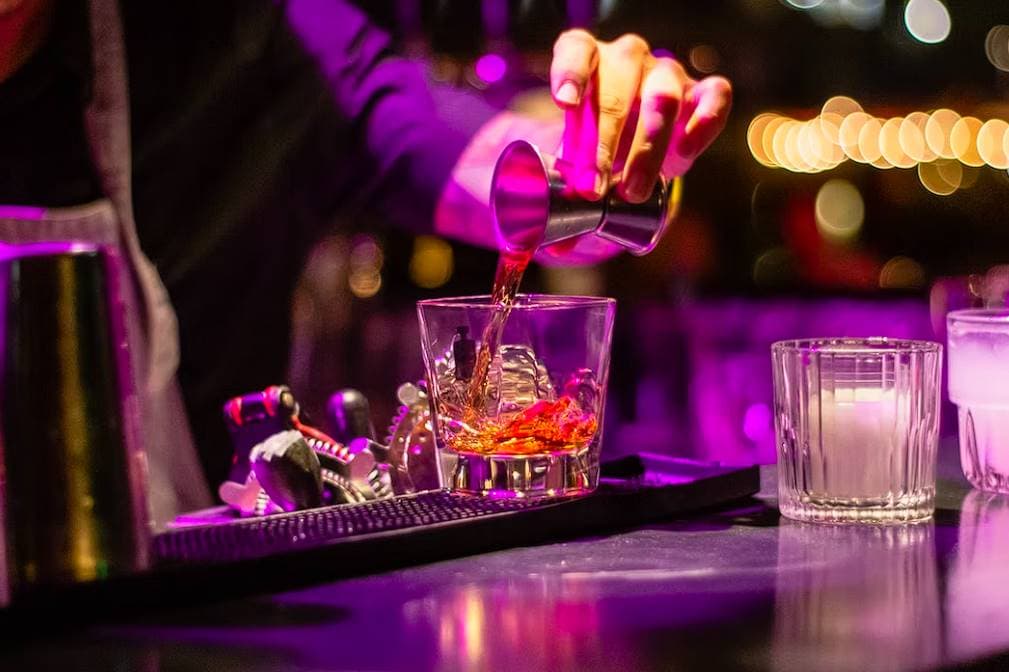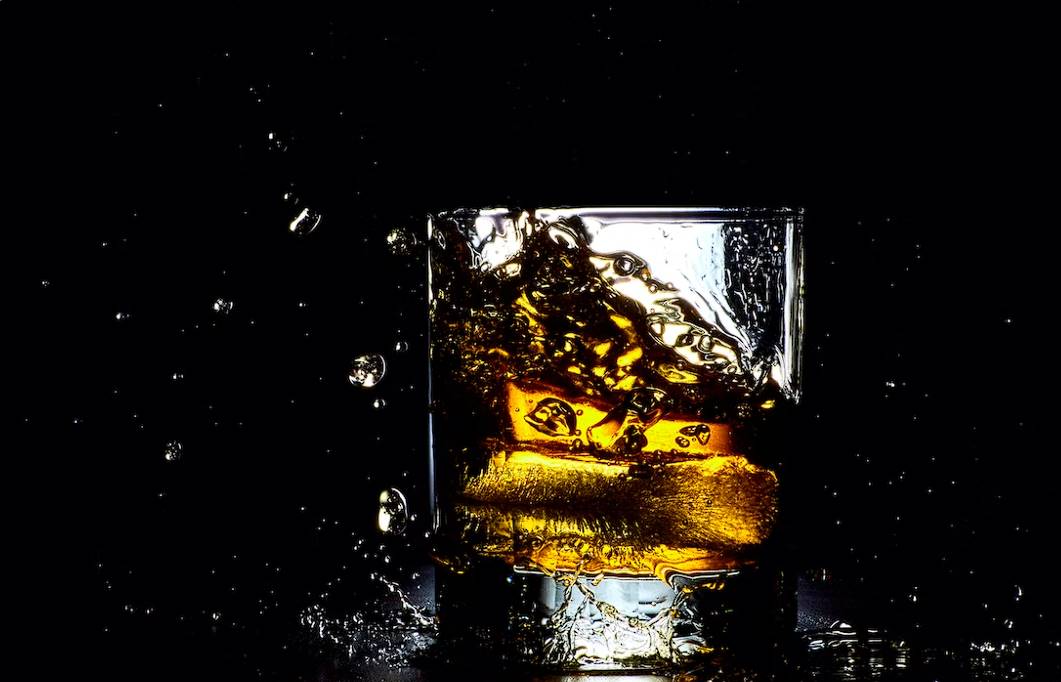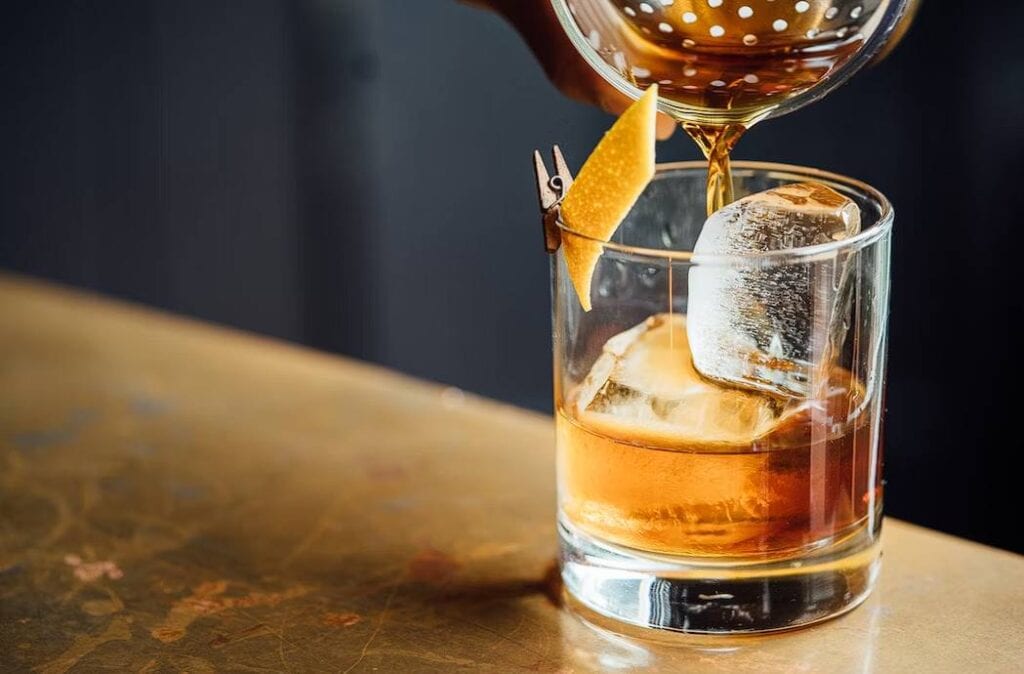Australia is among the first nations to do this. In recent years, new producers have entered the international whisky market, quickly rising to prominence. Australian whisky makers have come a long way in the past 25 years; the country's oldest distillery, Lark, opened in 1992. Looking back at whiskey's history in Australia sheds light on the beverage's recent triumph there. Are you looking for a brewery or distillery that will help take your business to the next level? We Tar Barrel are experts in the brewing and distilling industry, and we can provide you with all the services you need to make your business successful.
Why Mixing Whisky With Water Is a Better Way to Enjoy It
Whisky lovers are notoriously outspoken on a wide range of topics. They argue about whether or not age is a reliable quality indicator, sneer at chill-filtered bottles, and argue about the existence of terroir in whisky. The list of controversial whisky topics seems endless. Still, one tasting-related issue that causes strife among connoisseurs is the appropriateness of adding water to a glass of whisky to dilute the alcohol concentration.
Throughout the whiskey-making process, water is added to the spirit. This happens long before the whisky is bottled and reaches your glass. Therefore, the importance of employing high-quality water throughout the whole whiskey-making process, from steeping barley to induce germination (a crucial pre-fermentation step for many whiskies that use malted barley) and mashing through fermentation and proofing, cannot be overstated. Experts agree that the water quality used during distillation is vital, but they disagree on how much water should be used when tasting whisky.
However, there is mounting evidence that watering down whisky helps the user appreciate its entire range of flavours and aromas.
So now is a good moment to investigate what happens in the glass when water is added to whisky.

Whisky with Water: The Science Behind the Mix
The relative proportions of chemicals and molecules in an alcoholic beverage vary when water is added, leading to a distinct shift in flavour.
It's a dynamic partnership that's always evolving because of the whiskey's unique flavour ingredients. Filtration methods and barrel finishes, among other things, have a significant impact on these. This is because the solubility of different molecules in water varies, making some aromas more 'visible' than others, especially those that are overpowered by the alcohol at higher concentrations. In addition, as the strength of the spirit decreases, certain flavour compounds in whisky go from being soluble to insoluble. Insoluble chemicals impart their flavours to beverages, while soluble compounds are more difficult to detect.
Changes in flavour occur because molecules of ethanol (the alcohol component in whisky) readjust their positions relative to one another and the water. Ethanol molecules have a hydrophilic and a hydrophobic pole, therefore at low concentrations, the hydrophilic pole attracts water and the hydrophobic pole attracts glass.
These molecules preferentially arrange themselves at the surface, with the hydrophobic (water-repelling) side up and out into the air. When the amount of ethanol in the solution rises above a specific threshold, the molecules that cannot fit at the surface sink to the bottom, where they become soluble and are less perceptible to the human palate.
Which Type of Water Is Used to Dilute Whisky, and Why, Is a Mystery
The average whisky drinker probably doesn't care much about the molecular rearrangements in their glass, so it's simplest to conceive about the science in terms of how flavours are actively perceived.
Avoid using water that is particularly high in minerals, as this can alter the flavour of whisky. From a human perspective, using clean water for dilution is crucial not to compromise the qualities built up during the distillation, ageing, and blending procedures. The water's pH determines its taste more than the water's flavour. The flavour will be altered noticeably if the water has a strong flavour.
Ways for Diluting Whisky with Water
Quantity
Adding water to a container later is possible, but it's impossible to take it out again. So instead, add the water gradually and cautiously. It's common knowledge that adding water improves flavour, but the ideal amount has never been established. Whisky pipettes have handy markings for the ideal amount of water required for a 25ml and 50ml serving, so you never have to guess again. You can use a tiny water decanter or carafe instead of a whisky pipette, but you'll need to be very careful while pouring the water into your whisky dram.
Temperature
First, think about how hot the water is that you'll be adding. Serving whisky at too low of a temperature can shorten the drink and kill the flavour while serving it at too high of a temperature can shorten the finish. However, pouring a spirit at a higher temperature than is recommended can over-excite its volatile molecules, leading to a more intense "burn" that some drinkers find unpleasant.
The ideal temperature for a decent bottle of wine is between 11 and 14 degrees Celsius (52 and 57 degrees Fahrenheit). To adjust the water temperature from the tap, lift the lever to the top without moving it to the left or right.
Technique
Put your hand over the glass's top after the drips have been added, and then swirl the contents of the glass. This will not only prevent the valuable honey from escaping but also allow the flavour molecules to condense within the chamber. You should be able to detect various forms of magic by bringing your hand close to your nose.
Glassware
Using proper glass or stemware can elevate your whisky-tasting experience to a whole new level. Since aroma is the first step in the flavour appreciation process, it's important to ensure that your drink delivers the complete flavour without the ethanol burn that can mask nuanced flavours. A Glencairn or brandy glass with an inward curve from the largest circumference where the liquid lies to a smaller opening at the top is ideal for directing the scents upwards.
Since soda-lime glass has a more amorphous molecular structure than crystal, it can absorb the ethanol vapours, and the design as a whole is tailored to this effect. The whisky molecules are whirled out to the side, and the ethanol is absorbed thanks to the tornado effect created by the 'vortex point' at the bottom of the glass. The larger surface area provided by the bulb's form assists the whirling action that drives the ethanol molecules to dissipate. The chicane slows the ascending vapours, allowing for more extraction, and the diverging rim directs any leftover ethanol vapours away from the nose. Maple syrup, tobacco, cocoa, leather, fruit, spices, or whatever flavour profile the whisky master has crafted over the years with their barrels remain in the drinker's mouth.

Type of Water
Others will raise an eyebrow at the thought of drinking anything other than deionised or purified water. Regular tap water from your kitchen sink will likely contain mineral deposits and sanitising chemicals. Yes, these can have a negative impact on your whiskey's flavour. If you have the option, use spring water that has been bottled. However, if you can, use the finest water possible with your whisky. Finding the best water to pair with your whisky may require some trial and error, but what better reason is there to drink more whisky
Put Your Personal Tastes to the Test
The amount of water added to your whisky should reflect the potency of the whisky you use. Dried fruit and vanilla flavours are commonly associated with higher-end, more concentrated bottles, while lighter, citrusy notes are more readily apparent in entry-level blends. Smoky or peaty tastes may disappear when water is added, so plan accordingly.
If you want to perform your tests at home, you can grab a brandy or whisky glass and slowly add water while tasting it. Start with a medium-strength whisky, and know that your preferred dilution level will vary depending on the brand. Use spring water if possible, and pay attention to the subtle nuances in flavour and sensation as you experiment with different concentrations.
A glass of neat whisky should be on hand to compare with diluted versions of earlier, more subtle whisky brands. Whiskey's signature flavours can be lost if you add too much water, but just a drop or two can bring out the spirit's full potential.
Have Fun!
Also, play about with the amounts until you find the right balance. Nothing particularly complex here. It's supposed to be fun. After a good swirl, the whiskey's oak notes may emerge more clearly, and the whiskey's harsher flavours may soften a bit. That's why this method is more suited for whiskies bottled at their original strength (cask strength) than the 40% ABV level required by law.
When water is added to whisky, the mouthfeel may change. Some people like how things have changed from being more robust to having a creamier texture. The choice is yours. In order to confirm your preference, you should explore the world. Whisky drinkers were encouraged to experiment with different methods of consumption by the distiller.
Conclusion
The globe is seeing a whisky revolution, and Australia is among the pioneers. In the last 25 years, Australian whisky makers have come a long way, and there is evidence that diluting down whisky helps the user appreciate its full variety of flavours and smells. Although experts agree that the quality of the water used during distillation is critical, they vary on how much water should be used when tasting whisky. When water is added to an alcoholic beverage, the relative quantities of chemicals and molecules change, resulting in a significant change in flavour. Filtration processes and barrel finishes have a considerable impact on the flavour of whisky.
Because the solubility of different molecules in water varies, some scents are more apparent than others. Certain taste molecules in whisky become insoluble as the strength of the spirit lowers. It is critical to use clean water with a pH of 7.0 or below when diluting whisky. The optimal amount of water for a 25ml and 50ml serving should be slowly and carefully added. The temperature of the water should also be considered.
The ideal temperature for a good bottle of whisky is between 11 and 14 degrees Celsius (52 and 57 degrees Fahrenheit). Lift the lever to the top without moving it to the left or right to regulate the water temperature from the tap. Swirling the contents of the glass, using suitable glass or stemware, and using deionised or filtered water are all techniques. The chicane slows ascending vapours while the diverging rim sends any remaining ethanol vapours away from the nose. Regular tap water from your kitchen sink can have an adverse effect on the quality of your whisky.
Experiment with different concentrations and flavours to find the optimum water to match with your whisky. Begin with a medium-strength whisky and gradually add water while tasting. The oak notes in the whisky may become more prominent after a nice swirl, and the harsher aromas may mellow slightly. Whisky drinkers should try several methods of consumption to establish their choice.
Content Summary
- The whisky revolution is not limited to Scotland, Japan, and the United States.
- Craft whisky is gaining popularity worldwide, including in Taiwan, India, Italy, and South Africa.
- Australia has emerged as a prominent player in the international whisky market.
- Adding water to whisky is a controversial topic among connoisseurs.
- Water is added to whisky during the production process.
- Using high-quality water is crucial for the entire whisky-making process.
- Adding water to whisky helps appreciate its range of flavours and aromas.
- Water alters the relative proportions of chemicals and molecules in whisky, resulting in a flavour shift.
- Filtration methods and barrel finishes impact the flavours of whisky.
- The solubility of different molecules in water affects the visibility of aromas in whisky.
- Ethanol molecules rearrange in the presence of water, leading to changes in flavour.
- The type of water used to dilute whisky is a mystery.
- Using clean water for dilution is important to preserve the quality of whisky.
- Adding water gradually and cautiously is recommended.
- The temperature of the water affects the flavour of whisky.
- Swirling the glass after adding water allows flavour molecules to condense.
- Proper glassware, such as Glencairn or brandy glasses, enhances the whisky-tasting experience.
- Soda-lime glass is designed to absorb ethanol vapours and enhance flavour extraction.
- Choosing the right type of water for dilution may require experimentation.
- The amount of water added should reflect the potency of the whisky.
- Different concentrations of water bring out subtle nuances in flavour and sensation.
- Comparing diluted versions with neat whisky helps identify flavour differences.
- Finding the right balance of water is a fun and personal process.
- Oak notes in whisky may become more pronounced with the addition of water.
- Mouthfeel can change when water is added to whisky.
- Some people prefer a creamier texture after adding water to whisky.
- Experimentation with different methods of whisky consumption is encouraged.
- Whisky drinkers should explore the world of whisky to confirm their preferences.
- Adding water is more suited for cask-strength whiskies.
- Distillers encourage whisky drinkers to have fun and enjoy the experience.
Frequently Asked Questions
While purists may prefer to drink whiskey neat or with a splash of water, adding mixers or creating whiskey cocktails is a common practice and can indeed enhance the flavour. Experimenting with ingredients like soda, ginger ale, bitters, or citrus can create new flavour profiles and provide a refreshing twist. However, keep in mind that the addition of mixers will alter the whiskey's original taste, so choose your mixers wisely to complement and enhance the whiskey rather than overpower it.
The choice of glassware can have an impact on the whiskey-drinking experience. Specific whiskey glasses, such as Glencairn glasses or tulip-shaped glasses, are designed to concentrate aromas, directing them towards the nose as you sip. This can enhance your ability to detect and appreciate the nuances of the whiskey's flavour profile. However, if you don't have specialised glassware, a tumbler or rocks glass can still provide an enjoyable drinking experience.
While the flavour of whiskey is largely determined during the distillation and ageing process, there are a few ways to enhance your whiskey-drinking experience:
- Add a splash of water.
- Use a whiskey glass:
- Allow it to breathe: Let your whiskey sit in the glass for a few minutes before taking a sip.
- Experiment with ice or chilling methods
- Pair it with complementary flavours
- Take your time: Sip your whiskey slowly and savour each sip.
Whiskey can be paired with a variety of foods to enhance the flavour experience. Some popular pairings include dark chocolate, smoked meats, cheese (such as sharp cheddar or blue cheese), nuts, or even desserts like caramel or toffee-based treats. The flavours and textures of these foods can complement and accentuate the characteristics of the whiskey, creating a harmonious and enjoyable combination. Experiment with different pairings to find your own preferred combinations.
Yes, here are a few additional tips:
- Explore different whiskey styles
- Keep your whiskey properly stored
